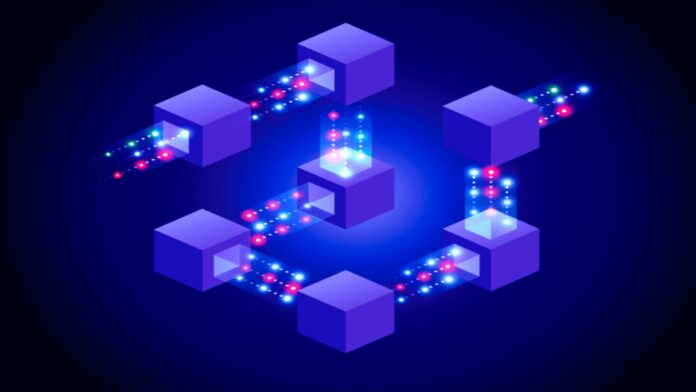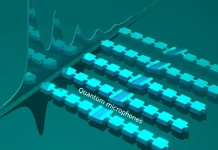The field of quantum computing has garnered a lot of attention in recent years for its potential to revolutionize computing by solving problems that classical computers are not capable of solving efficiently. But, quantum computing is not the only area of quantum technology that has the potential to change our world. Another promising area is quantum networking, which is the development of networks that use the principles of quantum mechanics to transmit and process information. Quantum networks could enable secure communication, faster processing, and more efficient computing. In this article, we will explore what quantum networks are, how they work, and their potential applications.
Contents
What is Quantum Networking?
Quantum networking is the development of networks that use the principles of quantum mechanics to transmit and process information. Unlike classical networks, which use bits to represent information, quantum networks use quantum bits, or qubits, which can exist in a superposition of states. This means that a qubit can represent both a 0 and a 1 simultaneously, which allows for more efficient computing and communication.
How do Quantum Networks work?
Quantum networks use a technology called quantum entanglement to transmit information. Entanglement is a phenomenon in which two particles become correlated in such a way that the state of one particle is dependent on the state of the other particle, regardless of the distance between them. This means that if you measure the state of one particle, you instantly know the state of the other particle, regardless of how far apart they are.
Quantum networks use this phenomenon to transmit information securely. In a quantum network, two parties can create a pair of entangled qubits, one for each party. They can then use these entangled qubits to transmit information securely, as any attempt to intercept the qubits would result in the entanglement being broken, alerting the parties to the fact that their communication has been compromised.
Potential Applications of Quantum Networks
Quantum networks have the potential to revolutionize a number of different industries. Here are just a few examples:
- Secure Communication: Quantum networks could enable secure communication that is immune to interception, as any attempt to intercept the qubits would result in the entanglement being broken.
- Faster Processing: Quantum networks could enable faster processing of information, as qubits can exist in a superposition of states, allowing for more efficient computing.
- Efficient Computing: Quantum networks could enable more efficient computing by allowing for the creation of quantum circuits that can perform multiple computations simultaneously.
- Precision Sensing: Quantum networks could enable more precise sensing by allowing for the creation of quantum sensors that can detect changes at the quantum level.
Challenges in Developing Quantum Networks
While the potential applications of quantum networks are vast, there are also significant challenges that must be overcome before quantum networks become a reality. Here are a few of the major challenges:
- Noise and Error Correction: Qubits are very sensitive to noise and other disturbances, which can cause errors in computation or communication. Developing error correction techniques for qubits is a major challenge.
- Scalability: Building large-scale quantum networks is a major challenge, as entangled qubits are currently difficult to create and maintain.
- Compatibility: Quantum networks will need to be compatible with existing classical networks in order to be useful, which presents a significant challenge.
Conclusion
Quantum networking is a promising area of quantum technology that has the potential to revolutionize a number of different industries. By using the principles of quantum mechanics to transmit and process information, quantum networks could enable secure communication, faster processing, more efficient computing, and more precise sensing. While there are significant challenges that must be overcome before quantum networks become a reality, the potential benefits make it an area that is worth pursuing. As researchers continue to make progress in developing quantum networks, we can expect to see exciting new applications of this technology.
In conclusion, quantum networks represent a significant advancement in the field of networking and computing. With the ability to transmit and process information using quantum principles, quantum networks offer unprecedented security, speed, and efficiency. However, the development of quantum networks is not without its challenges, and much work remains to be done before quantum networks can become a reality. Despite these challenges, the potential benefits of quantum networks are too great to ignore, and researchers around the world are working tirelessly to overcome the obstacles in their way. As this technology continues to evolve, we can expect to see even more exciting and innovative applications of quantum networks in the years to come.
Sources
- Kimble, H. J. (2008). The quantum internet. Nature, 453(7198), 1023-1030.
- Duan, L. M., & Monroe, C. (2010). Colloquium: Quantum networks with trapped ions. Reviews of Modern Physics, 82(2), 1209.
- Schindler, P., Barreiro, J. T., Monz, T., Nebenführ, H., Nigg, D., Chwalla, M., … & Blatt, R. (2013). A quantum information processor with trapped ions. New Journal of Physics, 15(12), 123012.
- Gisin, N., Ribordy, G., Tittel, W., & Zbinden, H. (2002). Quantum cryptography. Reviews of Modern Physics, 74(1), 145.
- Pirandola, S., Braunstein, S. L., & Lloyd, S. (2011). Quantum networks as unique resources for cryptography. Nature Communications, 2(1), 1-8.
FACT CHECK: We strive for accuracy and fairness. But if you see something that doesn’t look right, please Contact us.
DISCLOSURE: This Article may contain affiliate links and Sponsored ads, to know more please read our Privacy Policy.
Stay Updated: Follow our WhatsApp Channel and Telegram Channel.












